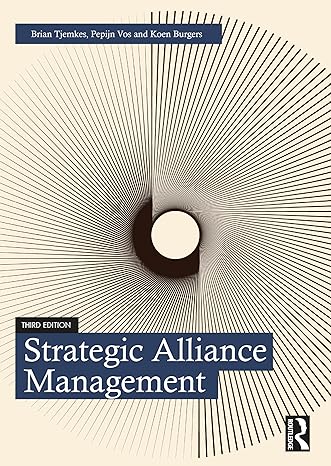Carbon dioxide levels in the atmosphere have been rising increasingly over the past decades and have reached
Question:
Carbon dioxide levels in the atmosphere have been rising increasingly over the past decades and have reached levels which have not been seen for the past 800,000 years.
Although sometimes heavily debated in society, a general consensus exists about the connection between greenhouse gas concentrations in the atmosphere and global average temperatures. Based on the studies of Dr Charles Keeling, in the late ffties and sixties of the last century, the frst indication were given for ‘anthropogenic’ (human caused)
contributions to global warming. In 1972, the Club of Rome published a ground-breaking report titled ‘The Limits to Growth’. In this report, the exhaustion of natural resources was highlighted as a factor which would ultimately lead to a decline in economic growth, availability of food and could even result in societal collapse. However, the report contained a message of hope. Human kind is able to live on the earth indefnitely if limits are imposed allowing for a restoration of the equilibrium between economic activity and earth’s ability to sustain those. Even though the publication of this report increased environmental awareness, carbon emissions have increased further. In 2015, a turning 40 Alliance partner selection point was reached. The Paris Agreement is a legally binding international treaty on climate change which was adopted by 196 countries. Its objective is to limit global warming to well below 2 degrees Celsius, compared to the pre-industrial age. At its core, the Paris Agreement provides a framework for fnancial, technical and capacity building; stimulating international collaboration; accelerating technology development; and increasing international solidarity. The agreement also changed the way in which human kind generates the energy it demands.
An important aspect in restoring the balance between economic development and earth’s resources is changing the way in which energy is generated. Since the Industrial Revolution, fossils fuels have become the most dominant source for energy. In 2019, coal, oil and gas still accounted for almost 80 per cent of the global primary energy consumption. However, the energy mix is fast decarbonizing. According to the International Energy Agency (IEA), fossil fuels will peak this decade, while non-fossil energy sources have become dominant in the supply of energy. Renewables sources of energy are gaining in importance fast. The rapid advancement of technologies allows increased yield and lowered costs. For instance, wind turbines have been in existence for more than a century; however, the upscaling of the technology over the past decades has resulted in reduced pricing and a sharp increase in its deployment. In the rapid changing energy market, old technologies are becoming obsolete, new technologies are being developed and new companies are entering the arena.
One example of a new company is SolarDuck, established in 2019 in the Netherlands. As a spin-off of Damen Shipyards, the biggest shipbuilder in the Netherlands and a prominent member of the Dutch offshore industry, SolarDuck was founded on the conviction that wind energy alone will not suffce. Large parts of the world population are living in wind-scarce but sun-rich regions. Solar energy is the most competitive form of renewable energy in these parts of the world. However, land constraints are becoming increasingly apparent. One solution is to let solar foat on inland waters like lakes. However, many islands and energy dense locations around the world have no sizeable inland waters at their disposal. But, many of these locations are located in coastal regions. The ability to deploy solar energy offshore will open up a new horizon for solar energy. As such, SolarDuck primarily focuses on more benign locations such as sun-rich regions in South East Asia, the Mediterranean and the Caribbean.
Questions 1 Regarding resource complementarity, explain how SolarDuck’s resource endowments interrelate with Pondera’s and RWE’s contributions to the partnership.
2 Regarding compatibility, which types of partner (mis)ft may SolarDuck experience in its partnerships with Pondera and RWE? What measures should SolarDuck consider to reinforce ft and mitigate the efects of misft?
3 The execution of the alliance was characterized by intense and constructive collaboration among the partners. Describe how the degree of partner (mis)ft may have afected the partners’ post-formation behaviours.
Step by Step Answer:

Strategic Alliance Management
ISBN: 978-1032119250
3rd Edition
Authors: Brian Tjemkes ,Pepijn Vos ,Koen Burgers






